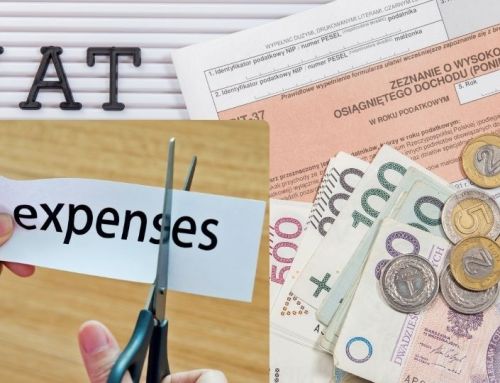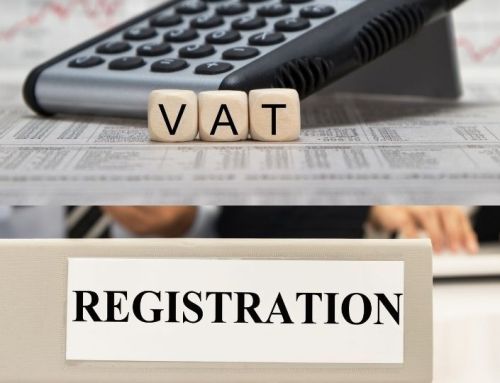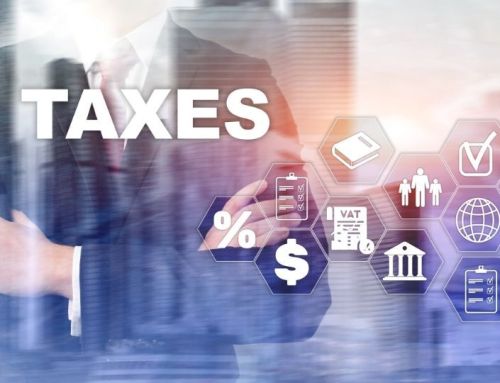If you’re asking how much is VAT in the UK in 2025, you’re not alone. VAT—Value Added Tax—remains one of the most important sources of government revenue and affects nearly every business and consumer transaction across the UK. Understanding the current VAT structure is critical not only for compliance but also for effective financial planning.
In 2025, the standard VAT rate in the UK remains at 20%, consistent with previous years. However, depending on the goods or services involved, reduced rates or exemptions may apply. This creates a multi-tiered system where knowing the correct rate is crucial.
VAT affects businesses differently depending on whether they are VAT registered. If your business turnover exceeds the VAT threshold of £90,000 (as of 2025), registration is mandatory. Staying updated on these changes is essential to avoid penalties and manage your pricing strategy effectively.
The question “how much is VAT in the UK” is simple on the surface but gets complex when you dig into the details—especially if you operate across different sectors or sell internationally.
Breakdown of VAT Rates by Sector in 2025
Understanding how much is VAT in the UK requires going beyond the flat 20% rate. Different industries face different VAT treatments, which affects pricing, invoicing, and compliance. Below is a sector-by-sector breakdown of VAT rates in the UK for 2025.
Retail and E-Commerce
- Standard rate (20%) applies to most consumer goods including electronics, fashion, and luxury items.
- Zero-rated items include:
- Children’s clothing and footwear
- Most food and drink for human consumption (excluding items like confectionery, alcohol, and crisps)
- Printed books and newspapers (digital equivalents are also zero-rated)
Online retailers must manage complex VAT calculations, especially when:
- Selling goods that fall into different rate categories
- Shipping to or from overseas (import VAT, duty, OSS/IOSS schemes)
Hospitality and Tourism
The hospitality sector operates primarily under the standard 20% VAT rate. This includes:
- Hotel accommodation
- Restaurant meals
- Takeaway hot food and drink
There are some exceptions:
- Cold takeaway food (like sandwiches) is typically zero-rated
- Catering services are taxed at the standard rate regardless of the food type
The reduced rate (5%) introduced temporarily during the pandemic has not been retained in 2025.
Construction and Property
This sector has a mix of rates and exemptions:
- Zero-rated: New-build residential housing
- Reduced rate (5%): Energy-saving materials, some conversions and renovations of dwellings
- Standard rate (20%): Commercial property work, professional services (e.g. architectural, engineering)
If you’re a contractor or developer, getting the rate right on every invoice is vital. Mistakes are costly and often discovered during HMRC audits.
Education and Training
Most education services provided by eligible schools, colleges, and training providers are VAT exempt. However:
- Private tutoring and training that isn’t part of a regulated qualification may be standard-rated
- Training provided to businesses (B2B) is usually subject to 20% VAT
Knowing the difference between exempt and taxable education services is essential for schools, consultants, and e-learning platforms.
Health and Care
Health services are typically exempt from VAT if delivered by registered medical professionals. This includes:
- GP and dental care
- Hospital services
- Certain medical diagnostics
However, cosmetic surgery, wellness products, and non-essential treatments are usually taxed at the standard 20% rate.
Finance and Insurance
These services are largely VAT exempt, which presents a unique challenge—firms in this sector can’t reclaim VAT on most of their costs. This leads many financial firms to outsource or restructure parts of their business to manage unrecoverable VAT.
Charities and Nonprofits
Charities can benefit from various VAT reliefs, including:
- Zero-rating on donated goods sold in charity shops
- Reduced rate on certain building works
- Exemption on fundraising events
However, not all charity activities are exempt, and mistakes can jeopardise their VAT status. It’s crucial for organisations to track which activities are taxable and maintain clean records.

VAT Rate Changes in 2025 – What’s New This Year?
For those closely watching how much is VAT in the UK, 2025 hasn’t brought dramatic overhauls to headline rates, but there are key adjustments and policy shifts that businesses must not overlook.
Standard Rate Holds Steady
The standard VAT rate in the UK remains at 20% in 2025. This has been unchanged since January 2011, reflecting the government’s continued reliance on VAT as a steady revenue stream without pushing consumer prices upward through higher taxation.
Despite inflation and fiscal pressures, the Treasury has opted to maintain the 20% rate to support consumer confidence and economic stability, particularly as sectors like retail and hospitality continue recovering post-pandemic.
Increased VAT Threshold
In a significant move, the UK VAT registration threshold was increased from £85,000 to £90,000 in April 2024, and that new level is holding steady in 2025. This means businesses must register for VAT once their taxable turnover exceeds £90,000 over a 12-month period.
This threshold change is particularly relevant for sole traders, small businesses, and micro-enterprises. While it eases the burden for very small operations, it also tightens scrutiny on those approaching the threshold—failure to register promptly can result in financial penalties.
Sector-Specific Adjustments
There are no changes to the reduced or zero rates this year, but HMRC has clarified classifications for several grey-area goods:
- Energy-saving materials in residential renovations continue to benefit from the 5% reduced rate, with minor extensions to include certain smart home technologies.
- The zero rate on period products, introduced in 2021, remains in place and has been extended to cover more reusable options, reflecting sustainability goals.
- Digital publications (eBooks, online newspapers) continue to be zero-rated, a change that was made permanent in prior years.
Implications for B2B and B2C Transactions
These updates mean businesses must continually monitor their compliance posture. For example:
- Retailers offering both zero-rated and standard-rated products must maintain accurate records and till systems.
- Construction firms need to verify reduced rate eligibility when working on residential property.
- SaaS and digital service providers should ensure correct application of the standard rate in cross-border situations.
Stay ahead of UK VAT rate changes and ensure your business remains compliant. Contact The Taxcom for clear guidance and expert advice.
Who Needs to Register for VAT in the UK?
Understanding how much is VAT in the UK is only part of the equation. The other critical question is: Do you need to register for VAT? The answer depends largely on your business turnover and the nature of your sales.
Mandatory Registration: The £90,000 Threshold
As of 2025, if your taxable turnover in any rolling 12-month period exceeds £90,000, VAT registration is mandatory. This includes all business income that is subject to VAT, even if some goods or services are zero-rated.
If you expect to exceed the threshold in the next 30 days alone, you are also required to register immediately.
Failing to register on time can result in:
- Backdated VAT bills
- Interest and penalties
- Lost credibility with HMRC
That’s why it’s essential to monitor your income closely. Many small businesses are caught off guard when they breach the threshold mid-year.
Voluntary Registration
Even if you’re below the £90,000 threshold, you can choose to voluntarily register for VAT. This is common among:
- Freelancers or consultants who deal mainly with VAT-registered clients
- Start-ups aiming to reclaim VAT on equipment or set-up costs
- Online sellers wanting to appear more established
Voluntary registration allows you to reclaim input VAT on business expenses, potentially reducing your costs. However, it also means you’ll have to:
- Charge VAT on your invoices
- Submit VAT returns regularly
- Maintain detailed VAT records
The decision should be strategic, especially if you sell to non-VAT registered customers who won’t be able to reclaim the VAT you charge.
Getting this wrong leads to border delays, unhappy customers, and tax penalties.
So when asking how much is VAT in the UK, the better question might be: Is my business charging and reporting it correctly?
Unsure if your business needs UK VAT registration? Let The Taxcom clarify your obligations and manage the process seamlessly.
VAT Returns and Deadlines – What You Need to Know
Once you understand how much is VAT in the UK, the next critical piece is managing your obligations correctly—specifically filing VAT returns and paying on time. Compliance isn’t optional; HMRC enforces deadlines strictly, and late submissions or payments lead to penalties.
VAT Return Basics
If your business is VAT registered, you must submit a VAT return to HMRC, even if you have no VAT to pay or reclaim. The standard VAT accounting period is quarterly, though some businesses opt for annual accounting or other VAT schemes (more on that later).
Each VAT return must report:
- Total sales and purchases
- VAT charged on sales (output VAT)
- VAT paid on purchases (input VAT)
- VAT due to HMRC or reclaimable
Returns are submitted electronically via Making Tax Digital (MTD)-compliant software.
VAT Deadlines You Must Meet
For quarterly VAT returns, the deadlines are:
- 1 calendar month and 7 days after the end of your accounting period
- For example, if your VAT quarter ends on 31 March, your return and payment are due by 7 May
Payments
VAT owed must be paid by the same deadline as your return. You can pay:
- Via direct debit
- Online banking
- CHAPS or BACS
Missed payments lead to interest charges and, if habitual, a surcharge period where future non-compliance is penalised more heavily.
Making Tax Digital (MTD) Compliance
Since April 2022, all VAT-registered businesses, regardless of size, must follow MTD for VAT. This means:
- Keeping digital VAT records
- Using MTD-compatible software to submit returns
In 2025, MTD is fully enforced and paper-based submissions are no longer accepted. HMRC has expanded the number of supported platforms and now requires digital links between systems—manual copying and pasting is not compliant.
What If You File Late?
If you fail to file or pay on time, HMRC uses a points-based penalty system. As of 2025:
- 1 penalty point per missed deadline
- A fine of £200 when a points threshold is reached (varies based on your submission frequency)
- Additional penalties for continued late returns
Late payment also incurs:
- Daily interest (currently set at the Bank of England base rate + 2.5%)
- Potential default surcharges if delays persist
Common Mistakes to Avoid
- Failing to reconcile bank statements with VAT records
- Including exempt or outside-scope income incorrectly
- Misconception about VAT on international transactions
- Forgetting to account for reverse charge mechanisms
Don’t miss crucial UK VAT deadlines and risk penalties. The Taxcom provides timely reminders and efficient filing services for your peace of mind.
VAT for International Trade – Imports, Exports and Brexit Implications
If you’re asking how much is VAT in the UK, the answer changes significantly when international trade is involved. Post-Brexit, VAT rules for imports and exports have been overhauled, affecting businesses that trade across borders. As of 2025, these rules continue to evolve, and businesses must be proactive to remain compliant and avoid costly errors.
VAT on Imports into the UK
Since the UK is no longer part of the EU VAT area, import VAT now applies to goods arriving from any country, including EU member states.
Here’s how it works:
- Goods imported into the UK are subject to UK VAT at the point of entry.
- If you’re VAT registered, you can account for this VAT using the Postponed VAT Accounting (PVA) system.
- Under PVA, instead of paying VAT upfront at the border, you declare and recover import VAT on the same VAT return.
This simplifies cash flow and avoids delays at customs.
Key Points About PVA
- You must include the import on your VAT return (Box 1 for output VAT and Box 4 for input VAT).
- Import VAT is detailed on your monthly C79 certificate from HMRC or your customs declarations.
- Using PVA is optional, but increasingly standard due to the administrative and cash flow benefits.
VAT on Exports from the UK
Exports are generally zero-rated, meaning you do not charge UK VAT on goods shipped overseas, but you can still reclaim input VAT related to those sales.
However, you must:
- Prove the goods have left the UK (e.g., with commercial shipping documents)
- Retain records for six years
- Understand the VAT treatment in the customer’s country
Selling to the EU – Special Considerations
For B2B exports to the EU:
- Your sale is zero-rated if the EU customer provides a valid EU VAT number.
- Your customer accounts for VAT under their country’s reverse charge mechanism.
For B2C exports (selling directly to consumers in the EU):
- You must consider the Import One Stop Shop (IOSS) scheme for goods valued under €150.
- Alternatively, the customer may pay VAT at the point of delivery, which can lead to delays and dissatisfaction if not managed properly.
VAT and Services Across Borders
If you provide services (not goods) to international clients, VAT treatment depends on the customer’s status:
- B2B services: Generally outside the scope of UK VAT if the customer is based abroad.
- B2C services: Often subject to UK VAT, but there are exceptions (e.g., digital services).
Always verify the “place of supply” rules, which determine where VAT is due.
Northern Ireland Protocol – Dual VAT Rules
Goods traded between Northern Ireland and the EU still follow EU VAT rules due to the Northern Ireland Protocol. This means:
- Businesses in Northern Ireland use both UK VAT and EU VAT numbers.
- NI to EU goods sales are treated as intra-community supplies, not exports.
If you sell goods into or from Northern Ireland, it’s essential to understand these dual systems. HMRC provides specific guidance under the “UK Trader Scheme”.
Frequently Asked Questions
1. How much is VAT in the UK in 2025?
In 2025, how much is VAT in the UK depends on the type of goods or services. The standard VAT rate is 20%, which applies to most purchases. There’s also a 5% reduced rate for select items like home energy and children’s car seats, and a 0% zero rate on essentials such as most food, books, and children’s clothing. Some services, like healthcare and education, are VAT exempt.
2. How much is VAT in the UK for small businesses?
For small businesses, charges for how much is VAT in the UK depends on what they sell. If they’re VAT registered, they must charge 20% on most sales unless the goods fall under a reduced or zero rate. The VAT registration threshold in 2025 is £90,000 in turnover over 12 months.
3. Is everything subject to VAT in the UK?
No. When asking how much is VAT in the UK, it’s important to know that not all items are taxed. Goods and services can be standard-rated (20%), reduced (5%), zero-rated (0%), or exempt. The VAT rate depends on the category defined by HMRC.
4. Can I reclaim VAT as a VAT-registered business?
Yes. If you’re registered, you can reclaim VAT on most business-related purchases. But knowing how much is VAT in the UK also means knowing which expenses are eligible. For example, personal costs and entertainment are not reclaimable.
5. How often do VAT returns need to be filed in the UK?
Businesses must usually file quarterly VAT returns. Regardless of how much is VAT in the UK you collect or reclaim, you must submit returns on time to avoid penalties. Filing deadlines are 1 month and 7 days after the accounting period ends.
6. What happens if I miss a VAT return or payment?
Missing deadlines can trigger fines, penalties, or interest. No matter how much is VAT in the UK is due, late filing or payment is taken seriously. HMRC now uses a points-based penalty system, so even small delays can have financial consequences.
7. What’s the difference between zero-rated and VAT-exempt goods in the UK?
When understanding how much is VAT in the UK, this is a key distinction. Zero-rated goods are taxed at 0%, allowing businesses to reclaim related VAT costs. VAT-exempt goods have no VAT charge but don’t allow input VAT reclaims.
8. How has Brexit affected how much VAT is in the UK for imports and exports?
Post-Brexit, how much VAT is in the UK for imports is based on UK rates at the point of entry. Exported goods are generally zero-rated, but documentation is crucial. Businesses use Postponed VAT Accounting to manage VAT on imported goods efficiently.
9. Can sole traders and freelancers register for VAT in the UK?
Yes. Even if you earn less than £90,000, you can register voluntarily. Understanding how much VAT is in the UK helps sole traders decide whether the benefits—such as reclaiming VAT on costs—outweigh the added admin.
10. What is the Flat Rate Scheme, and how does it affect how much VAT is paid?
The Flat Rate Scheme offers a simplified way to pay VAT. You apply a fixed rate (based on your sector) to your turnover. While this changes how much VAT is paid in the UK, it also limits your ability to reclaim input VAT on most purchases.
Need Help Navigating VAT in 2025?
At The Taxcom, we help businesses like yours make sense of VAT—what to charge, when to register, how to reclaim, and how to stay compliant.
- Clear advice.
- Reliable VAT registration and filing support.
- Industry-specific guidance that fits your operations.
Let us handle your VAT, so you can focus on running your business. Book a consultation or Contact us today.
Table of Content

Our Content Writing Team boasts a proven track record of crafting engaging and impactful content that drives success and achieves results.














